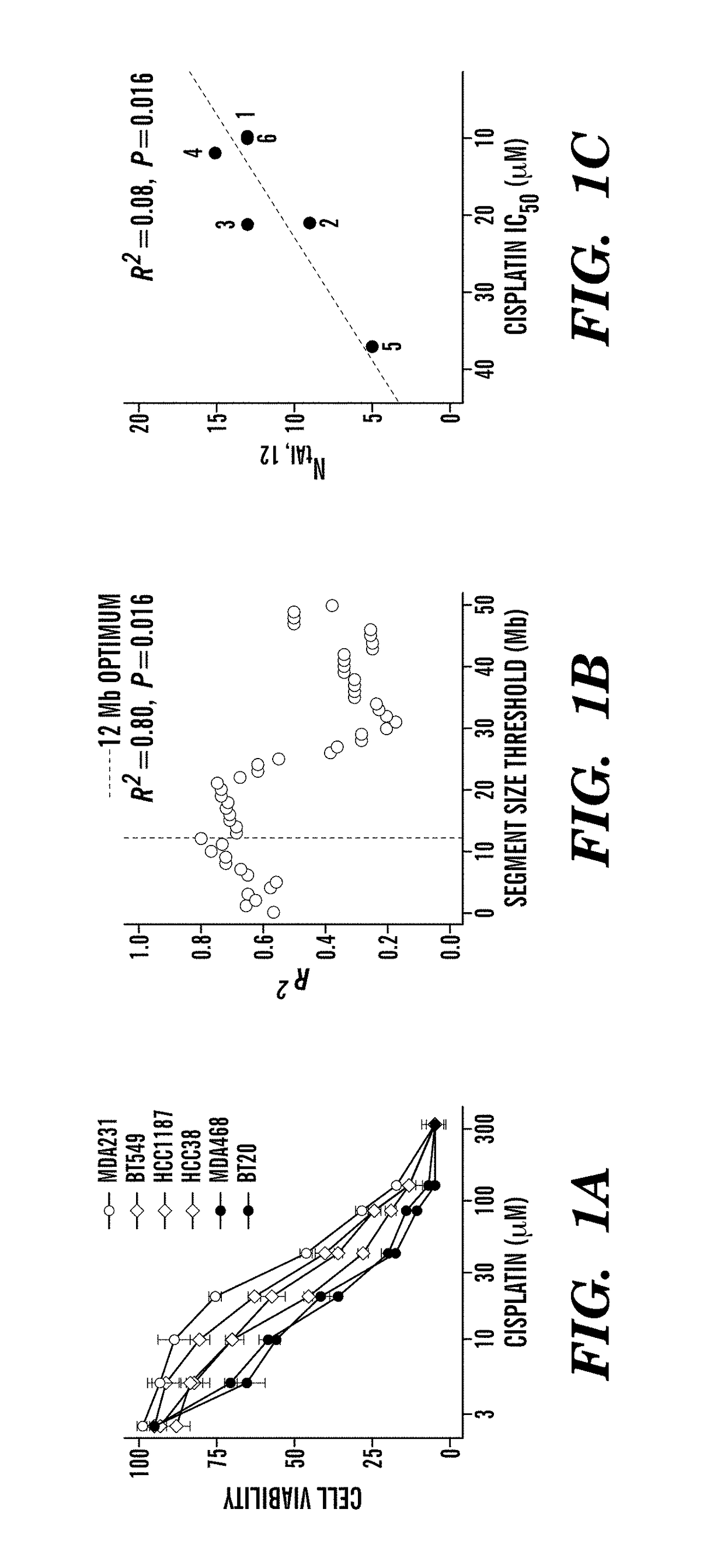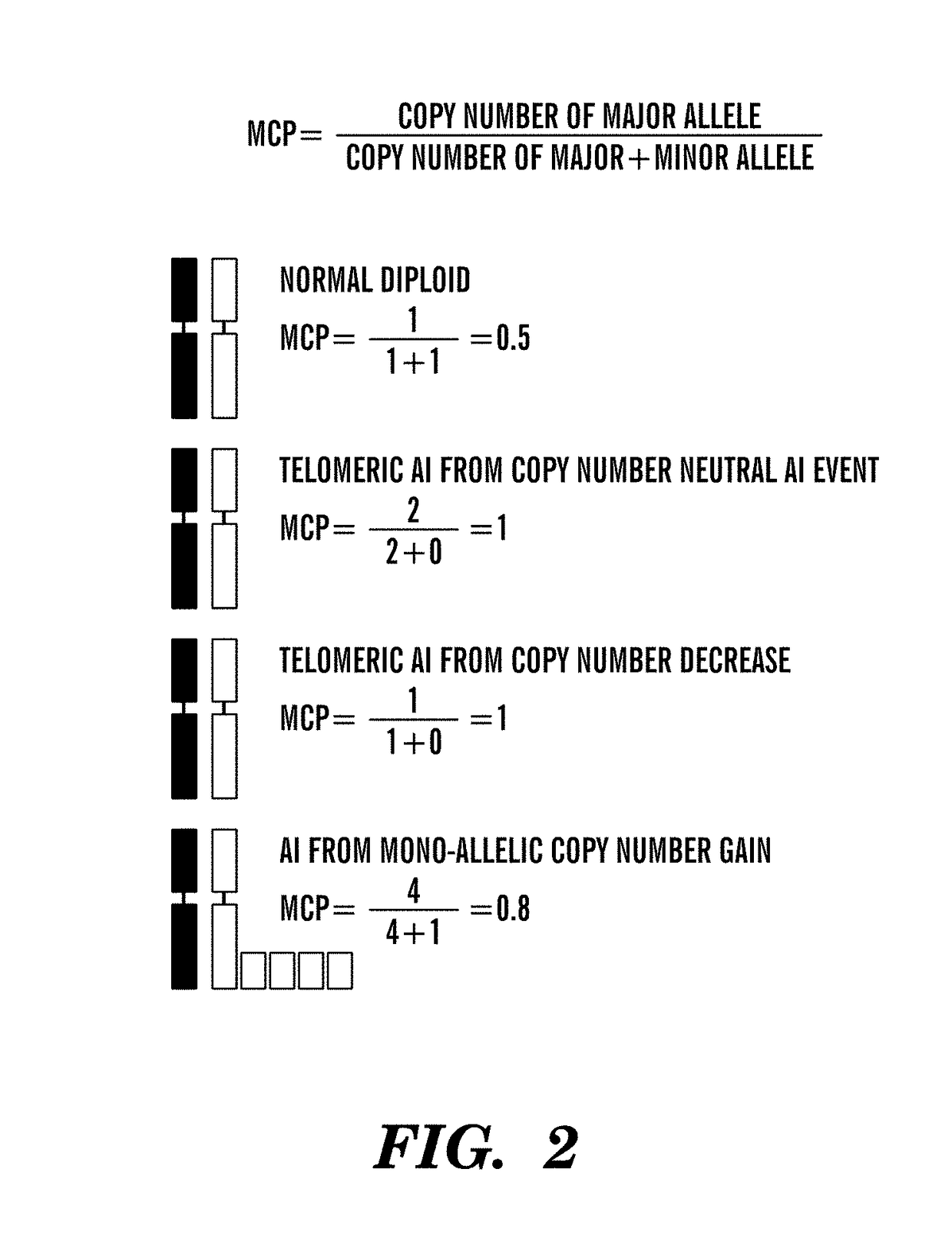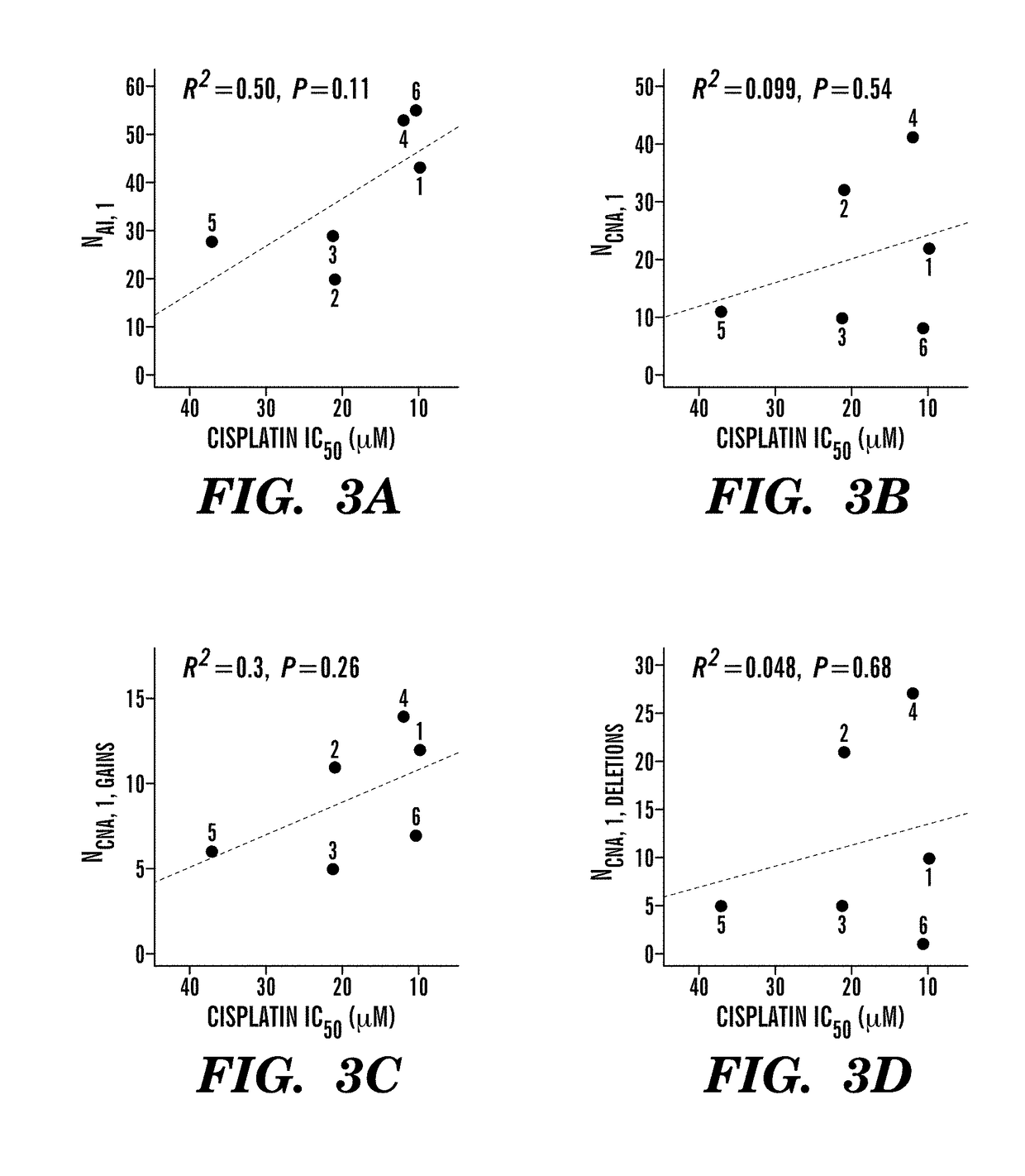Methods for predicting anti-cancer response
a technology of anti-cancer response and method, applied in the field of methods for predicting anti-cancer response, can solve the problems of severely hampered clinical interventions based on this information, and medical oncologists currently cannot predict which patients will or will no
- Summary
- Abstract
- Description
- Claims
- Application Information
AI Technical Summary
Benefits of technology
Problems solved by technology
Method used
Image
Examples
example 1
and Methods For Example 2
[0322]Pathologic response after neoadjuvant cisplatin therapy in the TNBC cohort was measured using the semi-quantitative Miller-Payne scale as described (Silver et al. (2010) J. Clin. Oncol. 28, 1145-1153; Ogston et al. (2003) Breast 12, 320-327). MIP genotyping was performed as described (Wang et al. (2007) Genome Biol. 8, R246). Allele signal intensity and genotypes from MIP genotyping or public SNP array analyses were processed by the CRLMM algorithm (Lin et al. (2008) Genome Biol. 9, R63) as implemented in the R package “oligo”. DNA copy number was determined using the R package “AromaAffymetrix” (Bengtsson et al. (2008) Bioinformatics 24, 759-767). Processed genotype data was exported to dChip (available on the world wide web at http: / / biosunl.harvard.edu / complab / dchip / ) for major copy proportion (MCP) determination, defined as ratio of major copy number to major+minor copy number (Li et al. (2008) Bioinformatics 9, 204). An estimate of level of normal...
example 2
ber of Chromosomal Rearrangements is Predictive of Chemotherapeutic Drug Sensitivity
[0344]Without being bound by theory, it is believed that intrachromosomal loss of heterozycosity (LOH) or allelic imbalance (AI) results from improper repair of chromosomal DNA double-strand breaks and that the genome-wide count of these chromosomal rearrangements in a specific tumor may indicate the degree of DNA repair incompetence, independent of the specific causative DNA repair defect. Therefore, the total number of chromosomal rearrangements in a tumor reflects the inability to repair DNA damage induced by drugs like cisplatin, and consequently predicts sensitivity to these agents. Cisplatin sensitivity of six TNBC cell lines for which SNP array data was available from Wellcome Trust Sanger Institute, UK, was thus determined (FIG. 1A). AI was determined by major copy proportion (MCP) analysis, a method less sensitive to normal contamination in heterogeneous tumor samples (Li et al. (2008) Bioin...
example 3
[0353]In this study, we utilized two preoperative clinical trials in women with triple negative breast cancer treated with cisplatin, in which pathologic response at the time of surgery provided an experimental endpoint. Sporadic triple negative breast cancers are heterogeneous in their responses to platinum salts, chemotherapeutic agents that depend in part on DNA repair defects for their cytotoxic activity (Sakai, W., et al. Secondary mutations as a mechanism of cisplatin resistance in BRCA2-mutated cancers. Nature 2008; 451: 1116-1120; Edwards, S. L., et al. Resistance to therapy caused by intragenic deletion in BRCA2. Nature 2008; 451: 1111-1115). Lesions in DNA repair caused by BRCA1 or BRCA2 dysfunction lead to platinum sensitivity; we reasoned that the types of chromosomal aberrations arising in the context of BRCA dysfunction might also be associated with platinum sensitivity in wtBRCA (wild type BRCA) cancers. Based on results in cell lines, we chose to enumerate one such c...
PUM
| Property | Measurement | Unit |
|---|---|---|
| length | aaaaa | aaaaa |
| frequency | aaaaa | aaaaa |
| segment size | aaaaa | aaaaa |
Abstract
Description
Claims
Application Information
 Login to View More
Login to View More - R&D
- Intellectual Property
- Life Sciences
- Materials
- Tech Scout
- Unparalleled Data Quality
- Higher Quality Content
- 60% Fewer Hallucinations
Browse by: Latest US Patents, China's latest patents, Technical Efficacy Thesaurus, Application Domain, Technology Topic, Popular Technical Reports.
© 2025 PatSnap. All rights reserved.Legal|Privacy policy|Modern Slavery Act Transparency Statement|Sitemap|About US| Contact US: help@patsnap.com



